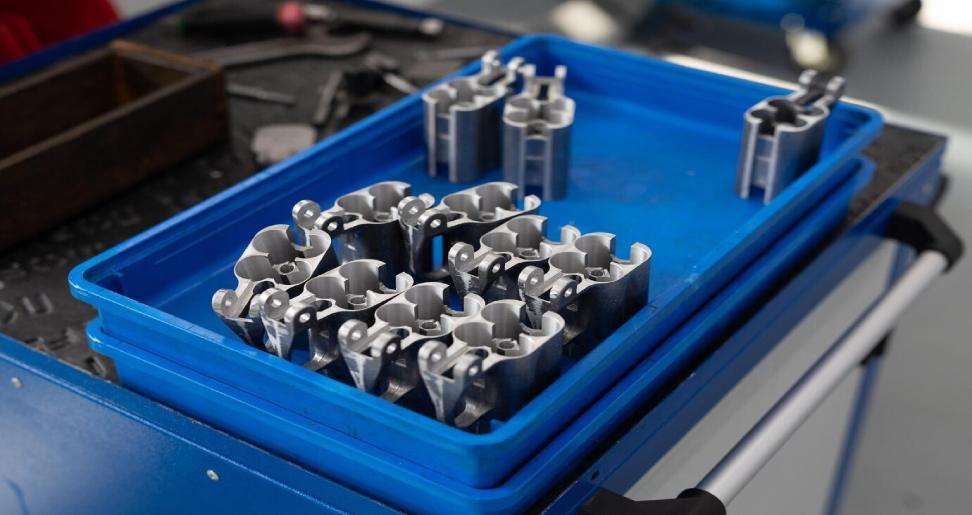Both die casting and plastic injection molding are widely used manufacturing processes for creating complex and high-volume parts. While they share some similarities, there are key differences in the materials used, the molding process itself, and the resulting product characteristics. Here’s a breakdown to understand the distinction between these two techniques:
Material Differences:
Die Casting: This process deals exclusively with metals and alloys. Commonly used materials include aluminum, zinc, magnesium, copper alloys, and even some steel alloys. The choice of metal depends on factors like strength, weight, corrosion resistance, and the desired surface finish.
Plastic Injection Molding (PIM): As the name suggests, plastic injection molding China utilizes various types of plastic polymers as raw materials. These can range from common thermoplastics like ABS, PP, and PE to engineering plastics like nylon and polycarbonate. The selection of plastic depends on the part’s functional requirements, such as strength, heat resistance, and flexibility.
The Molding Process:
Die Casting: This is a high-pressure die casting mold process. Molten metal is forced into a reusable steel mold cavity under high pressure. The two main types of die casting are:
Hot-Chamber Die Casting (HPDC): Used primarily for metals with lower melting points, like aluminum. Molten metal is kept in a heated chamber and injected into the mold cavity by a plunger.
Cold-Chamber Die Casting (CCDC): Used for metals with higher melting points. Molten metal is poured directly from a separate furnace into the mold cavity.
Plastic Injection Molding: This process involves melting plastic pellets and injecting them under high pressure into a mold cavity. The plastic chills and hardens within the mold, and the finished part is ejected. Here’s a simplified breakdown:
Plasticization: Plastic pellets are melted and mixed within a heated barrel to form a viscous liquid.
Injection: The molten plastic is injected into the mold cavity under high pressure.
Holding: The plastic is held under pressure in the mold to allow for complete cooling and solidification.
Ejection: The solidified plastic part is ejected from the mold.
Product Characteristics:
Die Casting: Produces parts with excellent dimensional accuracy, tight tolerances, and smooth surface finishes. Die-cast parts are known for their high strength, rigidity, and durability, making them suitable for applications requiring these properties, such as engine blocks, machine components, and electronic housings. However, die casting is limited in part size due to the high pressures involved.
Plastic Injection Molding: Offers a wider range of part sizes and shapes compared to die casting. PIM parts can be very complex and intricate, with good dimensional accuracy and a variety of surface finishes depending on the mold design and plastic material. However, plastic parts typically have lower strength and rigidity compared to die-cast metal parts. PIM is widely used for a vast range of products, from toys and electronics to automotive components and medical devices.
Other Key Differences:
Cost: Die casting molds can be significantly more expensive to manufacture compared to plastic injection molds. This is due to the need for high-strength steel to withstand the high pressures involved in die casting. However, die casting molds can often produce parts at a faster rate, potentially offsetting the higher initial cost.
Production Volume: Both processes are suitable for high-volume production. However, die casting is often used for applications requiring extremely high production volumes due to its faster cycle times.
Post-Processing: Die-cast parts typically require minimal post-processing, while plastic injection molded parts may require additional finishing steps like trimming, deburring, or surface treatment.
Choosing the Right Process:
The choice between die casting and plastic injection molding depends on several factors, including:
Part Material: If your application requires a metal part with high strength and rigidity, die casting is the clear choice. For plastic parts, PIM offers a wider range of material options with varying properties.
Part Complexity: Both processes can create complex parts. However, PIM may offer slightly more flexibility in terms of part geometry, especially for intricate shapes.
Production Volume: For very high-volume production runs, die casting might be more cost-effective due to its faster cycle times.
Cost: While die casting molds are expensive upfront, PIM molds can be a more cost-effective option for lower volume production runs.
In Conclusion
Both die casting and plastic injection molding are valuable manufacturing processes with distinct strengths and applications. Understanding the differences in materials, the molding process, and the resulting product characteristics will help you choose the most suitable technique for your specific needs.
Read More:

